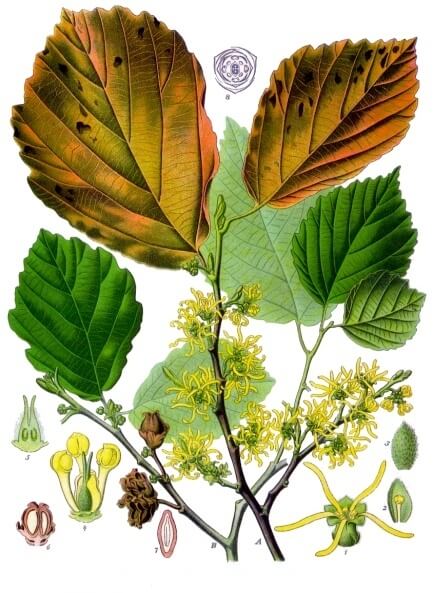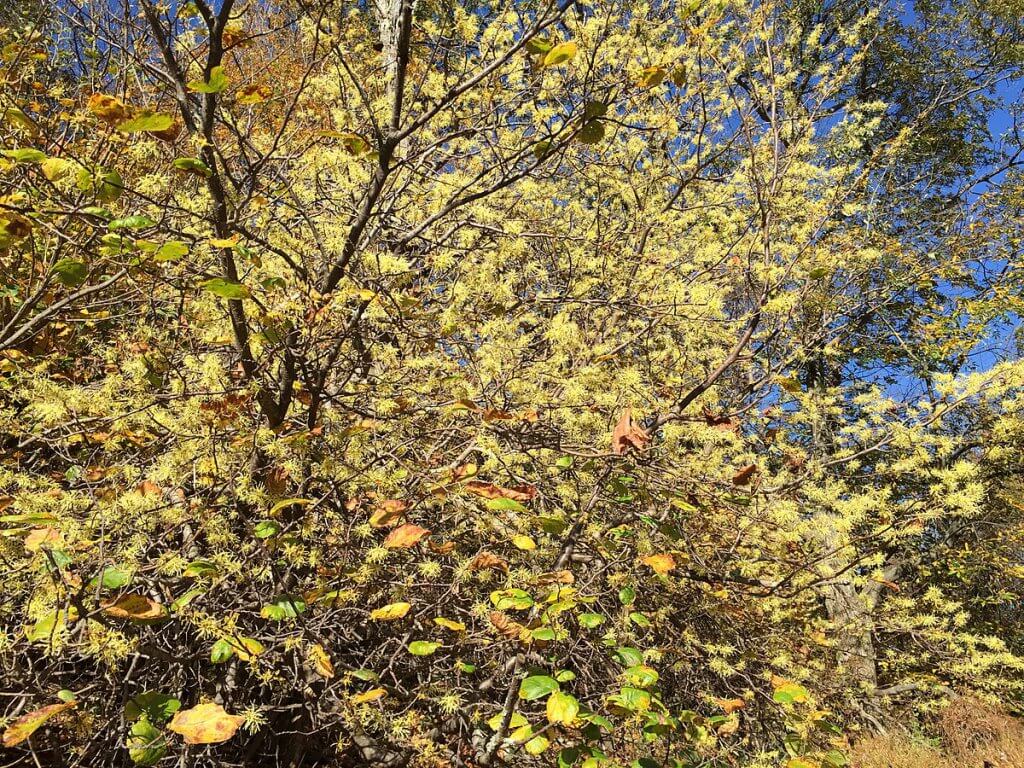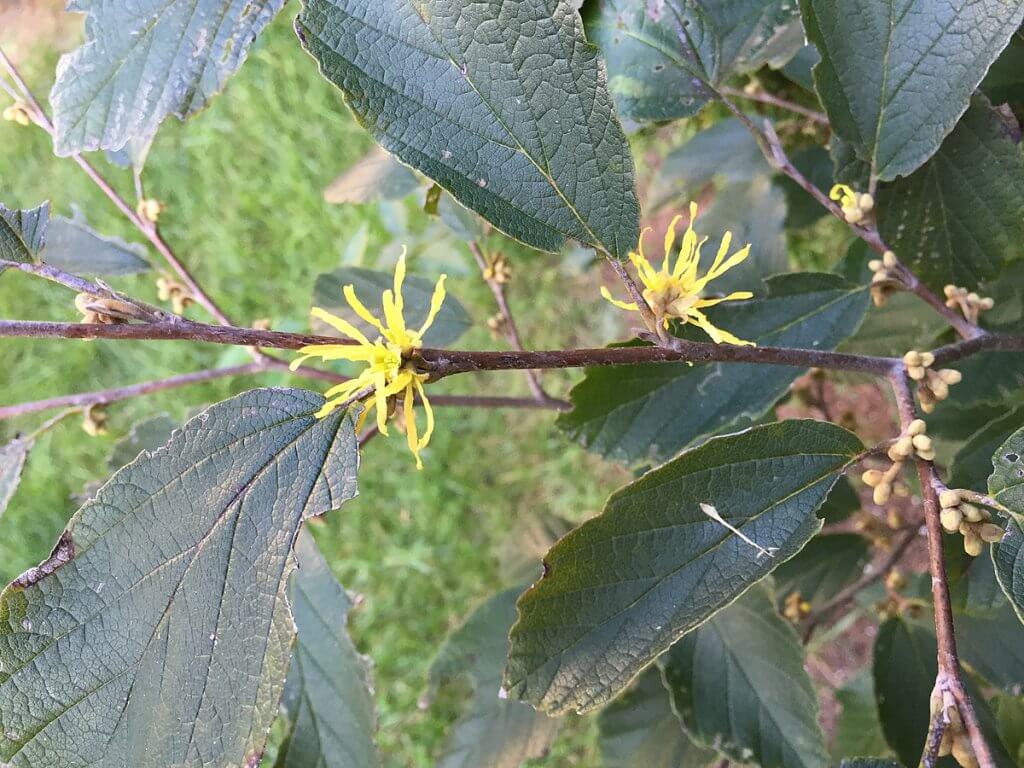
(Photo by: Franz Eugen Köhler/Wikimedia Commons)
Despite being useful, the American witch hazel (Hamamelis virginiana) is a very underrated plant. This flowering plant can be found growing across North America. Additionally, it’s been used to make a homeopathic remedy for skin problems and inflammations for centuries.
Various Uses
Witch hazel leaves, bark, and twigs are boiled and distilled to make medicine. Witch hazel water and extract are used topically to treat skin problems and maintain skin health. In fact, this plant is a common skin care and cosmetic ingredient. It’s especially popular in products for sensitive skin. Additionally, gargling witch hazel water can also provide some relief for sore throat. Lastly, a spritz of witch hazel in your shampoo can help treat scalp sensitivity, dryness, and dandruff.
Some people also boil the leaves and twigs to make herbal tea. But, it must be noted that this tisane is only good in small doses. Witch hazel has incredibly high tannin contents, making it toxic in large doses.
Health benefits
Studies and research have shown that witch hazel contains many valuable compounds, such as gallic acid and tannins. These compounds give witch hazel its anti-inflammatory, antimicrobial, and astringent properties. This means with hazel is good for treating skin irritation, insect bites, minor burns, acne, psoriasis, eczema, inflamed skin, cold sores, scalp sensitivity, itchiness, and other dermatological problems.
Witch hazel is also rich in antioxidants, making it a great at neutralizing harmful free radicals and preventing skin damage. Witch hazel can help treat sunburns and broken or damaged skin. A study even reported that witch hazel can slow tumor growth. This implies that witch hazel may be able to prevent or treat skin cancer.
Cultivation

(Photo by: Famartin/Wikimedia Commons)
Witch hazel plant has fantastic bright yellow flowers which bloom in the fall. This brilliant appearance makes it a lovely addition to your garden. This plant looks especially gorgeous during fall and winter.
American witch hazel can also help local bee, insect, and small critters by providing them with a valuable food source in the winter. If you’re interested in growing this plant in your garden, you’ll be glad to find that it’s low maintenance and generally pest-free.
As a cold-hardy plant, American witch hazel can also help local bee, insect, and small critters by providing them with a valuable food source in the winter. If you’re interested in growing this plant in your garden, you’ll be glad to find that it’s low maintenance and generally pest-free.
American witch hazel thrives best in moist, well-drained soils that are slightly acidic. It will grow well in full sun or partial shade. Full sun leads to more blossoms later in the fall, but if your area is especially hot, it may cause a lot of the leaves to wilt in the summer. Water witch hazel regularly to keep the soil moist. Also, it’s recommended to fertilize this plant in the spring and early summer with organic or slow-release chemical fertilizers.
You can start harvesting the leaves, bark, and twigs in the spring or fall. You can do this by clipping off some of the branches. Then, pluck the leaves and flowers of those branches and use a knife to peel away the bark. Aside from that, prune this plant in early spring to control its size and growth. Remove all the dead and damaged wood to encourage growth. If you see any suckers, immediately remove them to prevent them from spreading.
Cautions

(Photo by: Famartin/Wikimedia Commons)
You should only drink American with hazel tisane in small doses. Witch hazel is mildly toxic due to its high tannin contents. Internal use may cause vomiting, nausea, and even liver problems.
American witch hazel is generally safe to be used topically. But, on some individuals, it may cause allergic reactions and dermatitis. Do an initial skin patch test in small doses first. If the skin flares up, stop usage immediately.
Conclusion
American witch hazel is an undeniably useful plant to help around. It’s a great contribution to your local insect and small animals population while also being a wonderful herbal remedy source. American witch hazel can also add beauty to your garden all year round. Its dark green foliage will make your garden appear lush in spring and summer. Meanwhile, it’s firework-like blooms and golden foliage will cheer up your garden in fall and winter when other plants wilt.
---------------
Writen by Cornelia Tjandra
Cornelia is a freelance writer with a passion for bringing words to life and sharing useful information with the world. Her educational background in natural science and social issues has given her a broad base to approach various topics with ease. Learn more about her writing services on Upwork.com or contact her directly by email at cornelia.tjandra@gmail.com
Many of our readers find that subscribing to Eat The Planet is the best way to make sure they don't miss any of our valuable information about wild edibles.
See our privacy policy for more information about ads on this site






